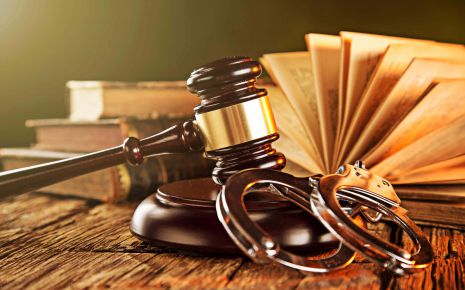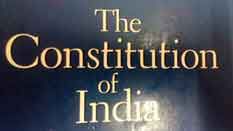Precedent As A Source Of Law: Different Aspects
Classic Example of Precedent as a Source of Law:
One of the most notable illustrations of precedent as a source of law in the United States is the 'Brown v. Board of Education' (1954) case. It called into question the validity of racial separation in government-funded schools and culminated with the Supreme Court's decision that dismantled the 'separate but equal' rule that had been codified through 'Plessy v. Ferguson' (1896).In a landmark case, 'Plessy v. Ferguson,' the Supreme Court upheld racially segregated state laws for public facilities like schools as long as they were separate but equal for both races. This ruling lent credibility to the practice of racial segregation and discrimination, further perpetuating the longstanding systemic inequities faced by African Americans in the U.S.
In the Brown case, a lawsuit was brought by an African American group that included Oliver Brown and claimed racial segregation in public schools of Topeka, Kansas violated the Fourteenth Amendment's Equal Protection Clause of granting all citizens equal rights.
The Supreme Court made a unanimous decision in favour of the plaintiffs, and they ruled that segregation in public schools is inherently unequal and violates the Equal Protection Clause of the Fourteenth Amendment. Furthermore, the Court clearly overruled the 'Plessy v. Ferguson' case and set a precedent on 'separate educational facilities being unequal.'
The ripple effect of the decision in 'Brown v. Board of Education' went far beyond public education. It facilitated the elimination of segregation laws and practices not only in other areas but also contributed to the larger civil rights movement that occurred throughout America. The case set a new precedent which argued racial segregation and discrimination as violations of the constitution, providing a base on which equality and integration were founded.
Furthermore, 'Brown v. Board of Education' offers a case in point where it can be seen that precedent has grown in its ability to cope with emerging social values and moralities. Before this case, 'Plessy v. Ferguson' had followed through on the separate but equal doctrine of keeping segregation alive but 'Brown v. Board of Education' did not recognize this precedent and called it out as an injustice.
This case law can be described as a highly revealing example of the impact of precedent on the evolution of law, denouncement of customary legal doctrines, and promotion of equity and justice. It remains an essential lesson on how precedents are capable of being potent and productive creators of laws responsible for crucial social changes that guarantee protection and respect for people's inherent rights.
Precedent as a Source of Law:
The principle of precedent, a cornerstone of the common law system, plays a pivotal role in shaping the development, interpretation, and application of laws through judicial decisions.Based on the doctrine of stare decisis, which translates to 'to stand by things decided,' precedent promotes consistency and predictability within the legal system. Stare decisis dictates that courts are bound to follow the decisions of higher courts within the same jurisdiction. This ensures uniformity in the application of law, promoting fairness and stability.
Precedents serve as authoritative interpretations of legal principles, providing guidance to judges in resolving similar cases. When a court establishes a precedent, it articulates the ratio decidendi, or the legal reasoning underlying its decision. This forms the binding part of the precedent, setting a standard for future cases with similar facts or legal issues.
Hierarchy plays a crucial role in the application of precedent. Higher courts, such as appellate or supreme courts, set binding precedents that lower courts must follow. While lower courts are not bound by their own decisions, they are bound by precedents established by higher courts. This hierarchical structure ensures consistency and coherence in the legal system.
However, the application of precedent is not absolute. Courts have the discretion to distinguish or overrule precedents under certain circumstances. Distinguishing a precedent involves finding material differences between the facts of the current case and those of the precedent, justifying a different outcome. Overruling a precedent occurs when a court expressly rejects or overturns a previous decision, usually because it is outdated, erroneous, or no longer reflective of societal values.
The doctrine of precedent has the inherent flexibility to gradually evolve and adapt the law to changing circumstances. By applying established legal principles to new scenarios, courts shape the law in response to evolving societal norms, technological advancements, and cultural shifts. This ensures that the law remains relevant and responsive to the needs of society. Additionally, precedent promotes legal certainty and predictability, allowing parties involved in legal disputes to anticipate how the law will be applied based on past decisions. This fosters confidence in the legal system and promotes fairness in dispute resolution.
However, reliance on precedent also has its limitations. The binding nature of precedent can restrict judicial creativity and innovation, leading to rigidity in the law. Furthermore, the application of precedent may perpetuate injustices or inequalities from previous decisions, especially if they were based on flawed reasoning or discriminatory practices.
Moreover, the proliferation of precedent in complex legal systems can result in inconsistency and confusion. Conflicting precedents may arise from different jurisdictions or within the same jurisdiction over time, creating uncertainty for judges, lawyers, and litigants. Despite these limitations, the doctrine of precedent remains a crucial aspect of the legal system in promoting fairness, predictability, and adaptability.
Ultimately, precedent plays an essential role in the common law legal system by establishing a solid foundation for the law and promoting consistency and predictability in its interpretation and application. Based on the principle of stare decisis, precedent upholds the value of adhering to past decisions while also allowing for potential changes and progress in the law.
While it is crucial for maintaining legal certainty and stability, blindly adhering to precedent may impede the evolution of the law and perpetuate injustices. Therefore, it is crucial to strike a careful balance between stability and adaptability when applying precedent, ensuring that the law remains principled and responsive to the needs of society.
Types of Precedent:
The common law legal system relies on a variety of precedents to guide courts in interpreting and applying the law. These precedents differ in terms of their authority, relevance, and applicability. Here are the primary types of precedents:- Binding Precedents: Binding precedents are decisions made by higher courts within the same jurisdiction that lower courts are required to adhere to. These decisions establish legally binding rules that must be followed by lower courts in similar cases. Binding precedents promote consistency and predictability in the application of the law.
- Persuasive Precedents: Persuasive precedents are decisions from courts in different jurisdictions or from lower courts within the same jurisdiction that are not binding, but may be influential in guiding the court's decision. While not legally binding, persuasive precedents can impact judicial reasoning and may be adopted by the court if they are deemed relevant and persuasive.
- Original Precedents: Original precedents are decisions made by a court for the first time, addressing a legal issue that has not been previously decided. These precedents establish new legal principles or interpretations and can serve as guidance for future cases with similar issues.
- Precedents by Analogy: Precedents by analogy involve applying a previous decision to a current case that shares similar underlying principles or factual circumstances, even if the issues are not identical. Courts may draw on existing precedents in order to determine the appropriate legal outcome in the absence of directly applicable authority.
- Distinguishing Precedents: Distinguishing precedents involve identifying significant differences between the facts or legal issues of the current case and those of a previous precedent. When a court distinguishes a precedent, it concludes that the precedent is not directly applicable to the current case and therefore does not bind the court.
- Overturning Precedents: Overturning precedents takes place when a higher court explicitly dismisses or invalidates a previous ruling made by itself or by a lower court in the same jurisdiction. This typically occurs when the court believes that the prior decision was incorrect, outdated, or inconsistent with current legal principles.
- Precedents Rendered Per Incuriam: Precedents rendered per incuriam are judgments made by a court that overlooks or fails to consider relevant legal authorities or principles. These decisions may not carry precedential weight and can be disregarded or corrected by subsequent courts.
Together, these types of precedents make up the body of case law that informs judicial decision-making and influences the evolution of the law within the common law legal system. While binding precedents hold the most weight in determining the outcome of a case, persuasive precedents, original precedents, and other forms of precedents also contribute to the complexity and diversity of the legal landscape.
Principles of Precedent:
Within the common law legal system, the principles of precedent, also known as the doctrine of stare decisis, dictate how precedents are established, applied, and altered. These principles serve as the foundation for ensuring consistency, predictability, and fairness in the interpretation and application of laws.The following are the key principles of precedent:
- Stare Decisis: At the core of the doctrine of precedent is the principle of stare decisis, meaning 'to stand by things decided.' This principle requires courts to adhere to decisions made by higher courts within the same jurisdiction. By doing so, stare decisis promotes stability and predictability in the legal system.
- Hierarchy of Courts: Precedents are established and applied within a hierarchical structure of courts. Higher courts, such as appellate or supreme courts, set binding precedents that lower courts must follow. This ensures consistency and coherence in the legal system.
- Binding Authority: Precedents established by higher courts are considered binding authority for lower courts within the same jurisdiction. Lower courts are obligated to follow these binding precedents when deciding similar cases, unless there are compelling reasons to distinguish or overrule them. This provides certainty and predictability in the application of the law.
- Ratio Decidendi: The legal principle or reasoning used by a court to make a decision, known as the ratio decidendi, forms the binding part of a precedent and sets a standard for future cases with similar facts or legal issues. This is distinct from obiter dicta, or passing statements, which do not hold the same weight.
- Distinguishing Precedents: When deciding a case, courts may choose to not follow a precedent if there are significant differences between the current case and the precedent. This allows for flexibility in the legal system while still showing respect for established authority.
- Overruling Precedents: Precedents may be modified or overruled if there are compelling reasons to do so. This may occur when a higher court overrules its own previous decision, or when a lower court distinguishes a precedent on the basis of factual or legal differences. This allows the law to evolve and adapt to changing circumstances, while still maintaining a level of consistency.
- Persuasive Authority: In addition to binding authority, courts may also consider persuasive authority in their decision-making process. This includes precedents from other jurisdictions, legal commentary, and scholarly opinions. While not binding, these sources may influence the court's decision.
Conclusion:
Judicial decisions made in previous cases, known as precedents, play an essential role in the development of law in common law systems. They serve as a guide for courts to ensure consistency and predictability in legal outcomes. The principle of stare decisis requires courts to follow precedents set by higher courts in the same jurisdiction. Precedents aid in the interpretation of statutes and address gaps in the law, influencing legal principles and offering direction for future cases. Nevertheless, courts retain the power to differentiate or overturn precedents when needed to accommodate evolving societal norms or rectify past mistakes, preserving the adaptability of the legal system.
Written By: Md.Imran Wahab, IPS, IGP, Provisioning, West Bengal
Email: [email protected], Ph no: 9836576565
Law Article in India
Legal Question & Answers
Lawyers in India - Search By City
LawArticles
How To File For Mutual Divorce In Delhi

How To File For Mutual Divorce In Delhi Mutual Consent Divorce is the Simplest Way to Obtain a D...
Increased Age For Girls Marriage

It is hoped that the Prohibition of Child Marriage (Amendment) Bill, 2021, which intends to inc...
Facade of Social Media

One may very easily get absorbed in the lives of others as one scrolls through a Facebook news ...
Section 482 CrPc - Quashing Of FIR: Guid...

The Inherent power under Section 482 in The Code Of Criminal Procedure, 1973 (37th Chapter of t...
The Uniform Civil Code (UCC) in India: A...

The Uniform Civil Code (UCC) is a concept that proposes the unification of personal laws across...
Role Of Artificial Intelligence In Legal...

Artificial intelligence (AI) is revolutionizing various sectors of the economy, and the legal i...








Please Drop Your Comments